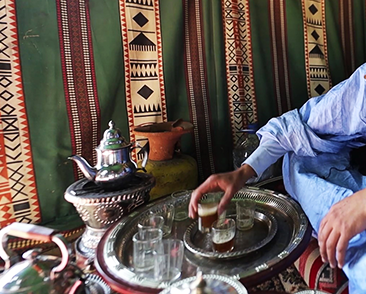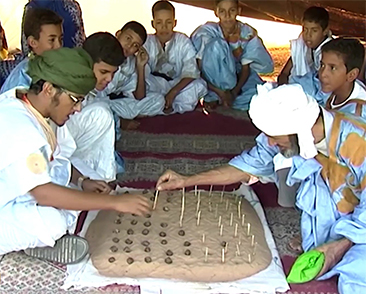
Exploring Sahrawi Cuisine Through Unique Local Food
The Sahrawi cuisine is very known for its unique and healthy local food that you can only try in the Sahara.
Each community has its own kitchen that distinguishes it from the others. The uniqueness of the Sahrawi kitchen lies in the combination of camel and goat meat and milk with what is vegetarian. It is one of the traditional kitchens that refuses to rely on manufactured materials.
"Bulgman"
One of the most popular dishes in the Sahara is “Bulgman,” which is a traditional dish known for its great health benefits, as well as its ease of digestion and lightness on the stomach. This is why it is widely consumed at the Suhoor (early morning dish) table during Ramadan.
The preparation of "Bulgman" does not exceed ten minutes. After heating the dried and ground barley flour, or what is known locally as “Al-Makli” flour, they place it in a special bowl called “al-gadaha” or “al-jira,” and combine its powder with hot water, sugar, and a little salt (if desired), before adding ghee, or what the Sahrawis also called "dahn." Some Sahrawis prefer to mix it with "lodak," which is a melted and well-refined camel hump fat, while others prefer it with olive oil.
"Zammit"
"Zammit" is another meal that is prepared with dried barley flour. The technique of preparation differs slightly from that of the "Bulgman." They only combine dry barley flour powder, a little hot water, sugar, fat, or olive oil.
It is a meal that protects against stomach disorders produced by the buildup of toxic fats or cases of acidity diseases, and it's commonly consumed on extremely hot days because of its effectiveness in treating severe or frequent thirst.
"Al-Ayesh"
"Al-Ayesh" is another popular traditional dish in the Sahara, which is a porridge made with barley, or what they call "Dishishah." To prepare this unique dish, Sahrawis mix the boiled barley in water, in a specific pot called "Al Marjan," with either sweetened milk, butter, olive oil, or goat's milk. This porridge is served in a special clay pot called "al-kasaa."
"Mreifisa"
"Mreifisa" is also a typical regional dish that can be served as a starter. It is a stew made with either rabbit, lamb, or camel meat, with onions and garlic. It is eaten with unleavened bread baked in sand.
"Maru and Meat"
The Sahara is also known for eating "maru and meat," or rice and meat without any preservatives or other additives. This pure Sahrawi dish is made in a very simple traditional method with either camel or goat.
This traditional dish is cooked by "margin," in which the meat and some fat are fried thoroughly, then water and salt are added, and finally the rice to make it ready to eat. Some people prefer to add ghee to make it tastier.
"Tidkit" or "Tishtar"
The "tidkit" or "tishtar" meal is another traditional dish that inhabitants of the southern provinces like to prepare with camel meat. After slaughtering a head of camels and dividing it among the families, Sahrawis preserve meat for a long period, cut it in the form of ropes, and then isolate it from the grease. The meat is then dried by directly exposing it to the sun's heat, and after it has dried completely, it is placed in special bags.
The "tidkit" is not ready until the dried meat is cooked with a little water on a low fire, then ground until it resembles the shape of a dough, then a little water (broth) is added to it, and some specific fat may be added too.
Couscous
Couscous is another popular traditional meal in the Sahara region. Although Sahrawi couscous is very similar to the original Moroccan couscous, some of them prefer it without meat, which they call "al-ghabba" couscous. This pure Sahrawi couscous is prepared by twisting the dried barley flour cooked on the water vapor and mixing it with only camel milk and sugar.



